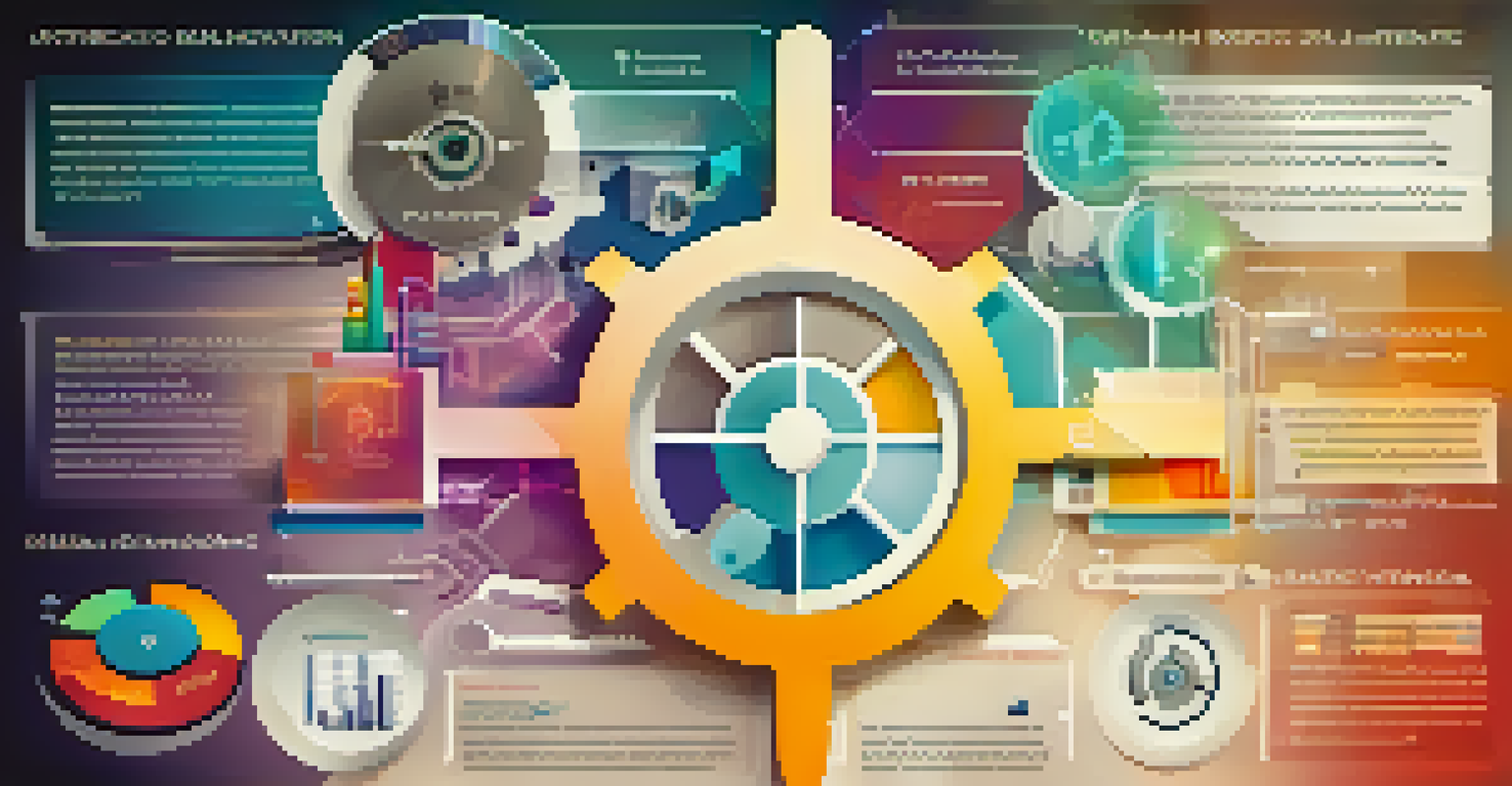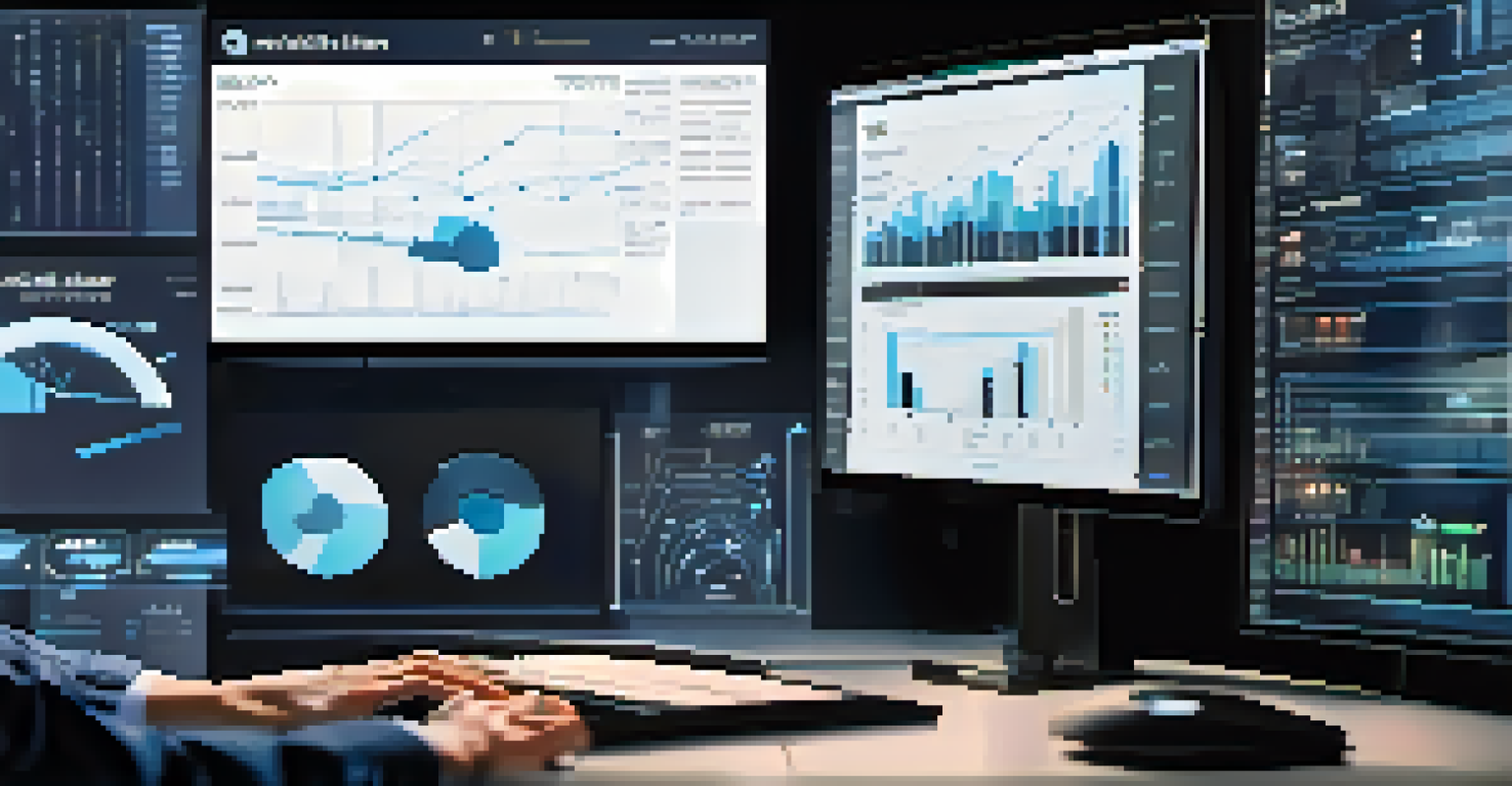RPA and Data Analytics: A Powerful Combination

Understanding RPA: What It Is and How It Works
Robotic Process Automation (RPA) is a technology that uses software robots to automate repetitive tasks usually performed by humans. Think of it as having a virtual assistant that can handle mundane activities like data entry, invoicing, or scheduling. By mimicking human actions, RPA allows organizations to streamline operations and reduce errors.
Automation is no longer just a tool; it's a mindset that organizations must adopt to thrive in a data-driven world.
At its core, RPA operates on the principle of simplicity. It doesn’t require deep technical skills to implement, making it accessible for many businesses. This ease of use is what makes RPA a popular choice for companies looking to enhance productivity without extensive investments in new infrastructure.
Moreover, RPA can be integrated with existing systems, which means businesses can leverage their current software and tools. This integration capability is crucial, as it allows organizations to maximize their return on investment while minimizing disruption during the transition to automated processes.
Data Analytics: Unlocking Insights from Information
Data analytics involves examining datasets to draw conclusions about the information they contain. By employing statistical tools and techniques, businesses can uncover patterns, trends, and insights that drive decision-making. Imagine trying to piece together a jigsaw puzzle; data analytics helps you see the bigger picture by revealing how individual pieces fit together.

With the explosion of data in today’s digital landscape, analytics has become indispensable for organizations. It enables them to make informed decisions based on actual performance metrics rather than assumptions. This shift from gut feelings to data-driven insights fosters strategic planning and enhances overall business performance.
RPA Simplifies Repetitive Tasks
Robotic Process Automation (RPA) automates mundane tasks, allowing businesses to enhance productivity without significant infrastructure changes.
Furthermore, data analytics can be applied across various domains, from marketing to operations. By understanding customer behavior, for instance, businesses can tailor their offerings to better meet market demands. This adaptability is what keeps organizations competitive in an ever-evolving landscape.
The Synergy Between RPA and Data Analytics
When RPA and data analytics are combined, the results can be transformative. RPA automates data collection and processing, enabling organizations to gather and analyze information more efficiently. This partnership allows businesses to focus on interpreting insights rather than getting bogged down in manual data management.
Data is the new oil. It’s valuable, but if unrefined it cannot really be used.
For example, consider a retail company that uses RPA to automate inventory management. By integrating data analytics, the company can analyze purchasing trends in real time, adjusting stock levels accordingly. This not only reduces waste but also ensures that products are available to meet customer demand.
Moreover, the combination of these technologies can lead to enhanced accuracy. RPA reduces the risk of human error in data handling, while analytics provides clarity through advanced reporting. Together, they create a powerful feedback loop that continuously improves business processes.
Use Cases: RPA and Data Analytics in Action
Numerous industries are already reaping the benefits of integrating RPA with data analytics. For instance, in healthcare, RPA can automate patient data entry, while analytics helps identify treatment outcomes. This not only streamlines administrative tasks but also enhances patient care by focusing on data-driven results.
In finance, RPA can help automate compliance checks, while analytics can monitor transactions for fraud detection. This dual approach not only improves operational efficiency but also strengthens security measures, ultimately protecting both the organization and its customers.
Data Analytics Drives Informed Decisions
Data analytics helps organizations uncover trends and insights, enabling them to make decisions based on performance metrics rather than assumptions.
Retail is another sector where this combination shines. By automating the data collection of sales and customer feedback, retailers can quickly analyze trends and adjust their strategies accordingly. This agility allows them to stay ahead in a competitive market.
Challenges of Implementing RPA and Data Analytics
While the benefits of RPA and data analytics are clear, challenges do exist. One of the primary hurdles is the initial setup and integration of these systems. Organizations may face difficulties aligning their existing infrastructure with new technologies, which can lead to frustration and delays.
Additionally, there is a need for a cultural shift within organizations. Employees must adapt to new roles and responsibilities as RPA takes over repetitive tasks. This transition requires effective change management strategies to ensure that the workforce is engaged and trained to leverage new tools effectively.
Lastly, data privacy and security concerns are paramount. With increased automation and data analysis, organizations must ensure they are compliant with regulations and protecting sensitive information. Addressing these challenges head-on is crucial for a successful implementation.
Future Trends in RPA and Data Analytics
As technology continues to evolve, so do the possibilities for RPA and data analytics. We are likely to see advancements in artificial intelligence (AI) being integrated into RPA, allowing for more complex decision-making processes. This evolution will enable robots to not only automate tasks but also learn from data interactions and optimize workflows.
Moreover, the demand for real-time analytics is growing. Businesses are increasingly looking for immediate insights to make quick decisions. As RPA streamlines data collection, the integration with analytics tools will allow organizations to respond to changing circumstances with agility.
Synergy Enhances Business Efficiency
Combining RPA with data analytics improves accuracy and operational efficiency, allowing businesses to focus on interpreting insights rather than manual data management.
Finally, the importance of data ethics and governance will rise. With the growing emphasis on responsible data usage, organizations will need to establish frameworks that ensure transparency and accountability in their automated processes. This focus will be essential to build trust with customers and stakeholders alike.
Conclusion: Embracing the RPA and Data Analytics Partnership
In conclusion, the combination of RPA and data analytics is not just a trend; it’s a strategic move that can redefine how businesses operate. By automating repetitive tasks and deriving insights from data, organizations can enhance efficiency, reduce costs, and make better-informed decisions. This synergy creates a more agile and responsive business model.
As we move forward, embracing this partnership will be key for companies looking to maintain a competitive edge. The ability to adapt and thrive in a data-driven landscape will set successful organizations apart from their peers. It’s not just about keeping up; it’s about leading the way.

So, whether you're a small business or a large enterprise, consider how RPA and data analytics can work together for you. By investing in these technologies, you're not just automating processes; you’re paving the way for a smarter, more efficient future.